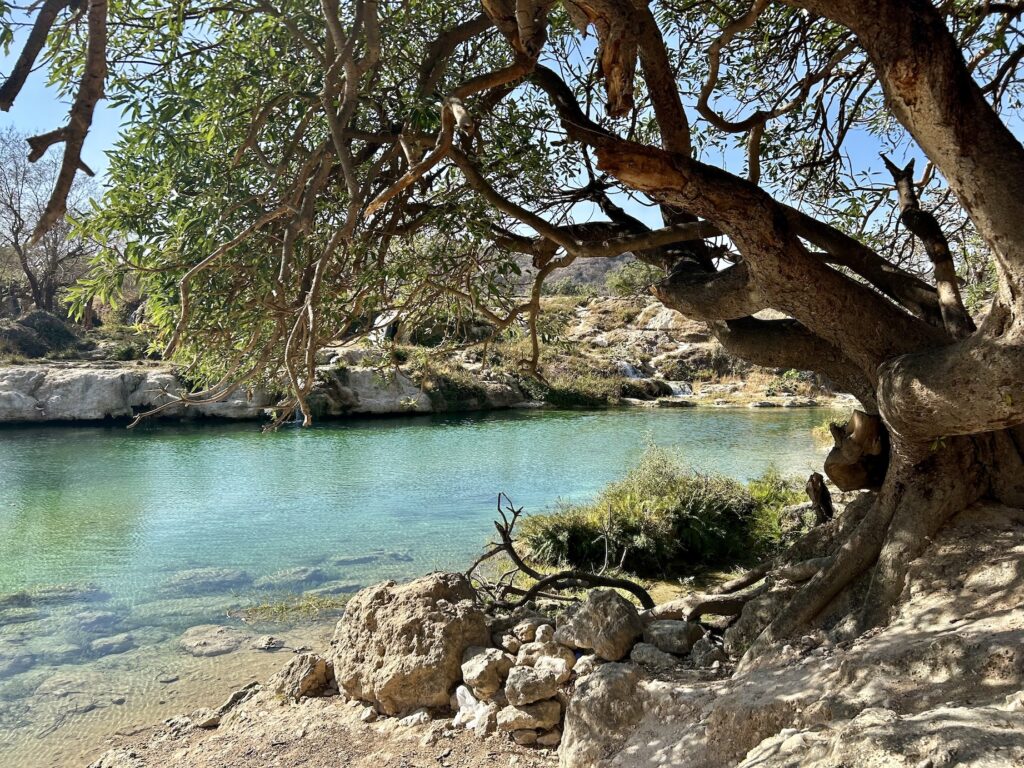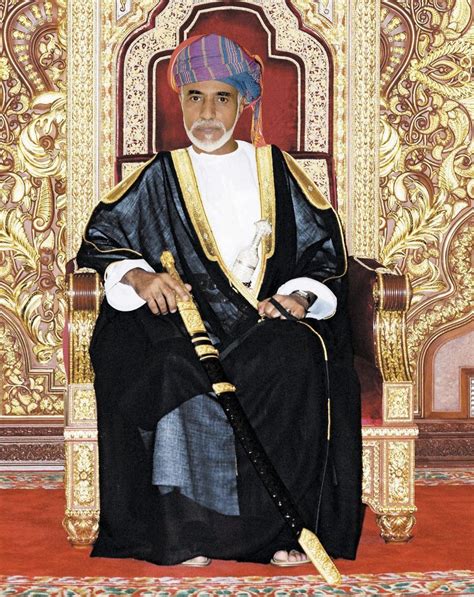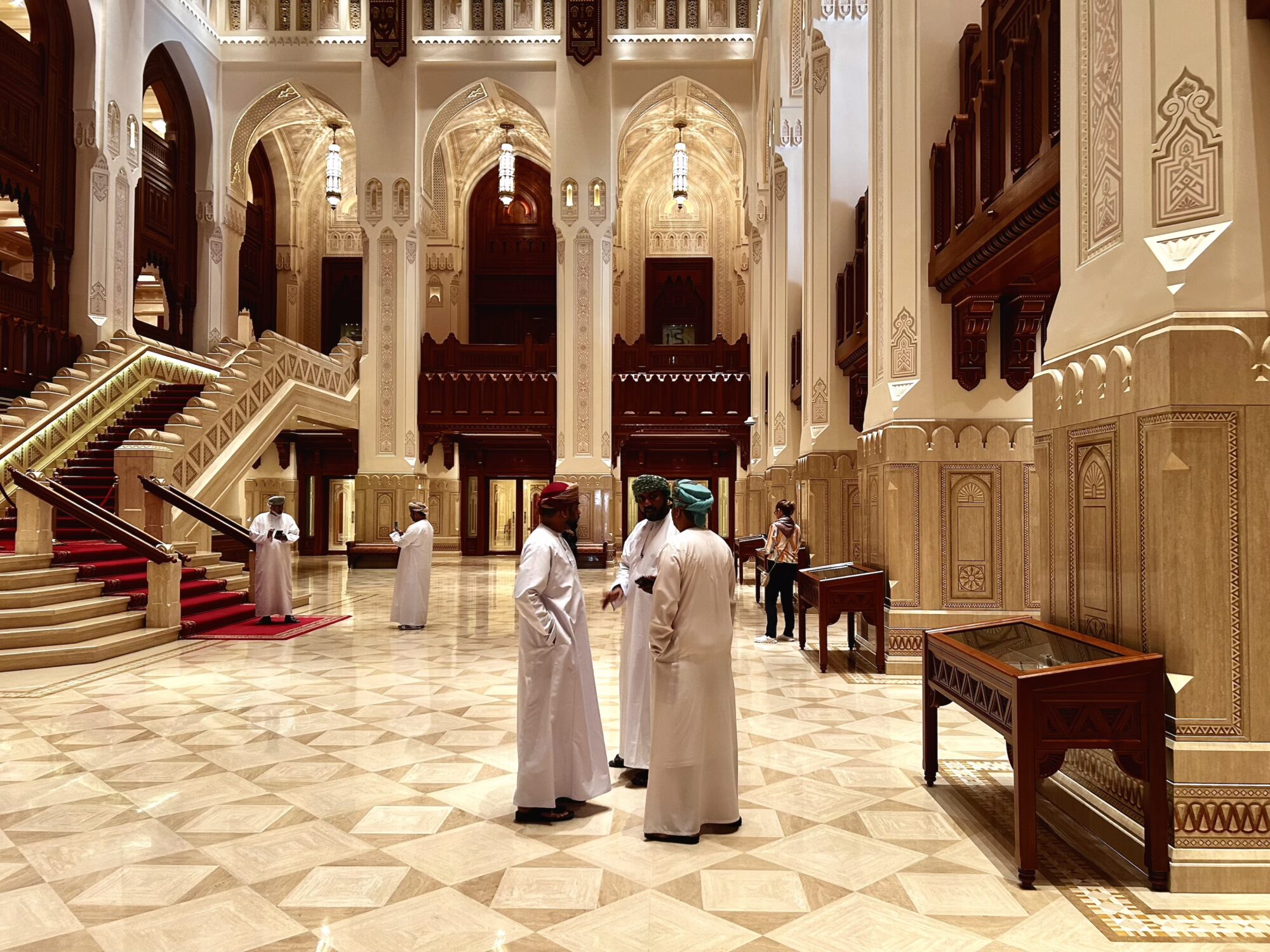Oman is one of the most vibrant and flourishing countries of our time. Between vast golden deserts, canyons carved by crystal-clear rivers, and lush oases dotting the landscape, the Sultanate preserves a rare and authentic charm.
Thanks to policies carefully aimed at preserving local traditions, Oman has avoided the rushed and at times violent transformation that has shaped places like Dubai and the United Arab Emirates. Instead, it chose to embrace and enhance its millennia-old heritage, carrying out a cultural and environmental preservation campaign that today makes it one of the most authentic and genuine countries in the region. Authentic not only toward its own people, but also toward the growing number of tourists who, year after year, Oman enchants with its discreet beauty.
At the heart of this transformation lies Sultan Qaboos bin Said. Under his enlightened leadership, Oman was able to grow and modernise without losing its soul, opening a fundamental chapter in the nation’s recent history.
Travel through the history of Oman: A Country Suspended in Time

Until 1970, Oman was a country almost frozen in time. Its people lived mainly from fishing, herding, and subsistence farming. There were barely a dozen kilometers of paved roads. Only a handful of schools that did not go beyond middle level, and the literacy rate was extremely low. The “Men of the Mountain” (Jibbali) had no way of leaving their lands, limited both by the absence of roads and by the many restrictions imposed by Sultan Said bin Taimur, which included travel bans and even the prohibition of using radios.
His opposition to modernisation, combined with the private appropriation of the nation’s scarce but valuable oil wealth, pushed many Omanis to leave their homeland in search of work and dignity in countries such as Qatar, Saudi Arabia, and the Emirates.
When Qaboos bin Said ascended to the throne, he inherited a poor and divided nation — but one with enormous potential. His vision and courage would soon open a new chapter in Oman’s history.
“He built everything where there was nothing”
“He was one of those rare free spirits you find once in a thousand years”
The Arrival of a Leader and His First Speech

Qaboos was born in Salalah in 1940. He studied first in Oman, then in England. There, he attended a private school and later the Royal Military Academy at Sandhurst. After completing his military training, he served for a year in the British Army in Germany.
On July 23, 1970, at just 29 years old, and with the support of Britain, he deposed his father Said bin Taimur and took power. On that occasion, he officially renamed the country The Sultanate of Oman (previously Muscat and Oman), underscoring a new era of political unity.
The situation he inherited was dramatic: the Dhofar Rebellion, a communist insurgency backed by South Yemen and supported by the USSR and China, threatened to destabilise the state. Qaboos managed to face it with the military support of allies such as the United Kingdom, the Shah of Persia, and King Hussein of Jordan.
Yet perhaps his most important act was a speech that forever changed the relationship between ruler and people. His words were simple, but they lit a spark of hope:
“We hope this day marks the beginning of a new era and a great future for all of us. We promise to perform our duty toward the people of our beloved country. We also hope each of you will do your duty in helping us build the prosperous and happy future we seek for this nation.”
Sultan Qaboos bin Said, first speech to the nation, 1970
Unlike many promises heard before in the region, Qaboos kept his. With the revenues from oil sales, the country transformed within decades. Roads and schools were built everywhere; modern hospitals became accessible to all. Housing programs with free homes and job opportunities allowed many Omanis abroad to return. In a short time, Oman went from being one of the most underdeveloped countries in the Middle East to a model of stability and progress — and even a rare example of measured democratization in the Arabian Peninsula.
The Funeral of a Hero
By 2020, rumors of the Sultan’s illness had begun to spread. When the news of his death came on January 11, the nation was in shock.
In Muscat, the funeral cortege wound its way through the capital: men, women, children, and even policemen wept openly. His body was taken to the Sultan Qaboos Grand Mosque, where thousands gathered for a final farewell. Voices cried out his name in collective grief, revealing how much he had been more than a ruler. He was a father, a guide, a hero.
Qaboos passed away at the age of 79, leaving behind a modern nation, respected internationally and capable of playing a key role as mediator in the region. His successor was his cousin and former Minister of Culture Haitham bin Tariq Al Said. He was chosen according to Qaboos’s own wishes, left in a sealed letter to be opened after his death. Haitham thus had to uphold a name and prove himself worthy of succeeding a Sultan whose influence was unprecedented.
“It breaks your heart, I was moved to tears,” admitted a citizen of Muscat.
After his passing, the Omani government issued a note:
“The will of the Almighty Allah on His beings is inevitable and to Him we shall all return. It was the Almighty Allah’s will that we have lost the best of men, the forgiven one, God willing, Sultan Qaboos Bin Said Bin Taimour; a man who cannot be served right by such a speech, as no words can calculate what he had achieved and accomplished. He set up a modern state from scratch, a country that is now recognized by all, far and near. He established a deeply rooted renaissance whose features have crystalized in a schema of laws and legislations that fortify this country and channel the progress of its march towards the blossoming future that he wished.”

